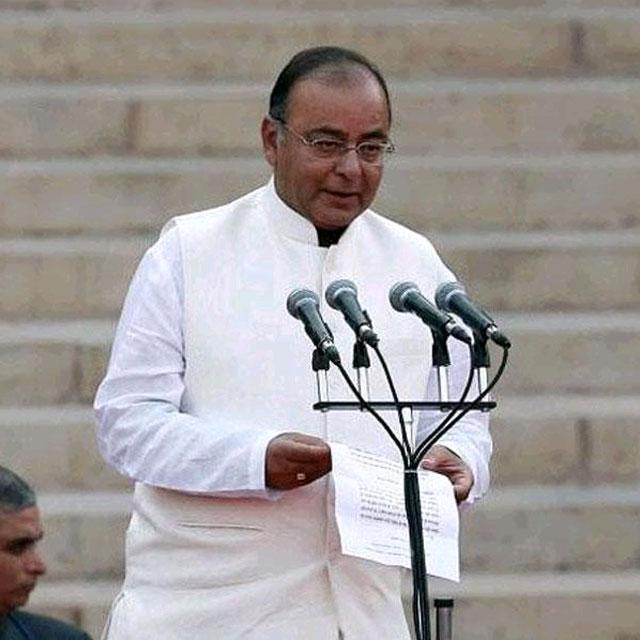The latest official estimates of economic growth, which just bumped up India's growth by several notches making it the world's fastest growing major economy, make a cause for cheer. But it has also left experts wondering on implications for upcoming policy decisions as they stand to run against the grain.
Just to recap, the latest estimates for India's GDP growth in Q3 of 2014-15 has been pegged at 7.5 per cent and projection for the full year is 7.4 per cent after the Ministry of Statistics and Planning (MOSPI) changed the method of calculation by revamping the base year. This accounting change had also catapulted GDP growth rate from a previous estimate of 4.7 per cent to 6.9 per cent for 2013-14.
This comes as a surprise as the previous estimates had showed India's growth slipped to the lowest level in a decade. The current figures indicate that the recent improvement in growth is not in sync with the high frequency data.
"India’s rebased GDP numbers continues to baffle,” according to a note by Asian lender DBS Bank.
The note adds that this strong underlying momentum is contrast to other subdued high-frequency indicators like industrial production, core industries index, credit growth, non-oil non-gold imports and other lead indicators for economic activity.
“Probably the only aspect that reflected the strong growth momentum was the stubbornly high inflation over the last two years, but has also tapered since," according to DBS.
Indeed the Indian economy appeared to be on ascend supported by falling crude oil among other commodity prices, low inflation with food prices getting tamed and the rise in business confidence with the new government in place.
However, the markets are still waiting for the big bang reforms as promised by the government. All eyes are set on the upcoming Union Budget to see how the government actually plans to weave the growth story after promising reforms and much more.
With bank NPAs still high and low private capital spending, the case for higher GDP remains rather questionable.
"Overall, we are unsure about how to reconcile this new data with indicators that show companies struggling with earnings and investment banks seeing rising bad loans, credit growth slowing, and exporters reporting negative growth," Deutsche Bank economists Taimur Baig and Kaushik Das said in a report.
Fiscal and monetary policy conundrum
While the official statistics states that the recent revisions to the method of calculation of data for GDP presents a better picture for the economy, it makes it harder for the economy to assess further changes in the fiscal and monetary policy.
The key issue now lies in balancing the previous argument that the slowing economy needs a rate cut with the new data.
Arun Singh, senior economist at global business information firm Dun and Bradstreet, said: "Earlier we were saying that economy is slowing because of the elevated interest rate and now we cannot do that, despite of elevated interest rate economy did better.”
The monetary authority RBI had been holding on to a rate in light of the stubborn inflation. It had just loosened the screws last month after inflation fell under its comfort zone.
Although inflation is now well under control raising the decibels for calls on further cuts, a prospective rate cut would not gel with the high growth rate in the economy and could possibly raise the spectre of wage spiral led inflation.
A Prasanna, chief economist at ICICI Securities, said, "This kind of recasting of data suggests there is lot of uncertainty in making policy in an emerging economy like India; so obviously central bank has to be more conservative in framing policy."
Experts say RBI had set its priority on tackling inflation and even though prices are in control now it would continue to follow inflation while deciding on monetary policy moves.
Dun and Bradstreet's Singh says, RBI should focus on inflation first at this point of time.
“While we maintain that monetary easing cycle would continue, these data are likely to be put through detailed scrutiny," wrote Shubhada Rao, chief economist at Yes Bank, in a note while also emphasising that "despite suggesting an improvement, in absence of historical data series for growth, drawing implication for policy is difficult."
On the fiscal policy front, the new data present a dilemma for the Finance Minister Arun Jaitley too.
While the government stands ready to infuse more money in the flailing infrastructure sector and offer tax breaks for the manufacturing sector to support the Make-in-India campaign, new figures for GDP show that a fiscal stimulus may pump up inflation.
A better picture would emerge in the next few days as a closer scrutiny of the methodology clears the air over the new GDP data.
(Edited by Joby Puthuparampil Johnson)





